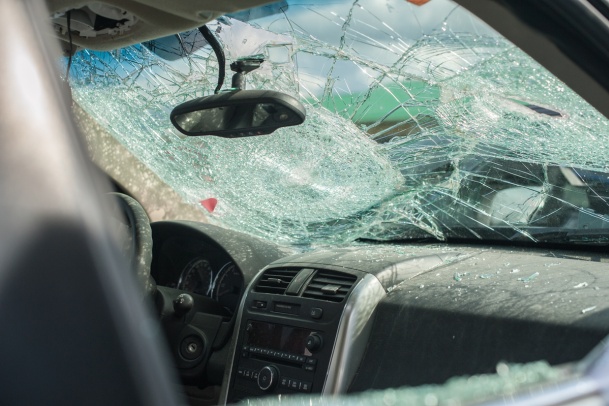
Written by Kayla Jane Barrie Updated on Dec 12, 2025 7 mins read

Total loss refers to vehicles that are damaged beyond repair, or are "totalled". Repairs would cost more than the vehicle's actual cash value. If your insurance company deems the damages so substantial that they can't be repaired safely, it will be a total loss, aside from cost considerations.
Here we will discuss what happens in these situations, how the value is determined and common questions about what happens when your vehicle has been totalled.
Insurers consider factors such as repair costs, salvage value, safety, and financial considerations when estimating damage and determining repair timelines.
Here’s an example of a total loss situation:
Let’s say the market value is $10,000, and you still owe $12,000 on your loan. If your car is totalled, you will still owe your financing company $2,000. The $10,000 settlement cheque will be paid to the finance company. You are responsible for paying off the remaining balance on your loan.
Once your insurer writes off the automobile as a total loss, it is branded as salvage. The make, model, mileage and conditions determine the cash value. Next, it will be auctioned off for its salvage value.
After a car accident, your automobile will be assessed by a claims adjuster for damage. This will depend on several situational factors, namely the accident details and your coverage.
If your automobile meets one of the following criteria, it will be declared a total write-off:
If the total cost to repair the damage is greater than the current value of your vehicle, it will be deemed to be totalled or a write-off by your insurer. In this case, it doesn’t make financial sense for them to pay for repairs, and it will be considered a total loss.
The payout amount you will receive is based on the following:
If you are found to be at-fault for the accident, your claim will fall under your collision insurance if you have the coverage. In this situation, your insurer will pay the cost for replacement. The payout will be based on the current market value minus your deductible.
If you are not at-fault, it will fall under direct compensation property damage (DCPD). You will receive a cash settlement based on the current market value of your vehicle.
Most companies follow a similar claims process for totalled vehicles:
If an insurer determines that the cost to repair the damage is close to or exceeds your vehicle's value, it will be considered totalled.
Most insurers use a similar car write-off calculation. It’s based on repair costs and vehicle evaluation.
Here is a simple calculation used to determine if your car falls under a total loss:
Actual Cash Value (ACV) – Repair Costs + Salvage Value = DecisionFor example, let’s say the actual cash value of your vehicle is $7,000 and the cost to repair it is $9,000. In this situation, your vehicle would be a total loss because the value is less than repair costs ($7,000 - $9,000 = - $2,000). Generally, your provider will pay a lower amount when comparing repairs or cash value.
If repair costs are close to the current market value (about 80% or higher), your insurer may still consider it a write-off, even if it’s less than the market value. Your insurer also factors in other costs associated with the claim – rental cars, claims services, and other costs.
There are several factors to consider that determine the actual cash value of a vehicle:
The actual cash value is also based on the price it would have sold for in your city. So, if you live in Toronto, they will use the average sale price for your vehicle in Toronto. If you live in Ottawa, they will use the price in Ottawa, and so on.
Many drivers are unaware that they can and should negotiate a total loss settlement with their insurance provider. Here are some tips to negotiate a settlement:
If negotiations with your adjuster go unresolved, and you are not happy with your cash settlement, you have the right to seek arbitration.
According to the Financial Services Commission of Ontario:
“If you still disagree over the value of the vehicle, or its contents, or the nature, amount or cost of any repairs, the matter can be settled by an appraisal. Your request for an appraisal must be made in writing, and both you and your insurer must participate. They can also make this request in writing, but you have the option to choose whether or not to participate. For this process, each side will appoint an appraiser, and both appraisers will either agree on a value or, if they disagree, will both agree to appoint an umpire who will make a final decision on the matter.”
Gap insurance can come in handy when your vehicle gets totalled. If you owe more on your lease or financing agreement than the actual value, this will cover the difference. It will ensure you don’t have to pay out of pocket, and it will cover the remaining balance of your lease or auto loan.
Once you reach a settlement with your insurer, you will receive a cheque for the agreed-upon vehicle write-off value, minus your deductible (if applicable). The amount of time it will take to receive your total loss payment varies, but it generally takes a couple of weeks. It will depend on your insurer's processes and payment procedures.
It is your responsibility to purchase a replacement vehicle once you receive your settlement money. The value may or may not fully compensate for replacing your vehicle with a comparable alternative. It depends on your policy and whether the vehicle is owned, financed, or leased.
If your automobile is fully paid off, you will receive a cheque for the actual cash value of your vehicle minus your deductible. You will use this money to purchase your replacement.
If your vehicle has been totalled, contact your lien holder. This is the company from which you leased the vehicle. In most situations, you will receive a cheque directly from your leasing company for the current market value.
If your lease amount exceeds the settlement cheque, you are required to pay the remaining balance out of pocket. You will have to negotiate the repayment terms with your lease company.
With the length of car loans increasing, it is common for drivers to still be on the hook for financing costs if a car is totalled.
In some situations, the market value of your vehicle is less than what you still owe your financing company. This can leave you “upside-down” – owing more than it is worth.
In addition to finding a new vehicle, you will also be required to pay the balance owed on your car loan. You may be able to roll it into a new car deal.
We all know that new cars lose value as soon as they roll off the lot. But you can protect yourself from significant value loss and a lower valuation if your car is a total write-off. How? You can add OPCF 43 / 43A Removing Depreciation Deduction waiver to your policy.
This endorsement ensures your new vehicle (usually two years old or less) is protected against depreciation in the event of a total loss. Your insurer will reimburse you the full value you paid. This money can be used to purchase a replacement. Without this endorsement, you will be paid the depreciated value of your automobile for a total loss.
If you disagree with the total loss determination by your insurer and believe it can be repaired cost-effectively, you have the right to file an appeal. You can request an appraisal appeal under the Insurance Act.
Yes. You could see an increase in your car insurance if you are at-fault for a total loss claim. If the accident was not your fault, your rates will not increase.
Yes. You can negotiate with your insurer to keep your car if it is totalled. As part of your settlement, you will be paid the actual cash value of your vehicle, minus the deductible and the value the car could be sold for as salvage.
The two main reasons to keep a totalled automobile are to salvage the parts yourself or because you believe it can be repaired and made safe to drive again. Consider the repair costs, financing, coverage, resale value, local laws and if it can pass inspection.
It depends on the type of damage that occurred during the accident. If most of the damage is done to the body of the automobile, it’s possible. However, in most cases, it will not be financially sensible to make repairs, and it may not be safe to drive even after the repairs are made.
If you are questioning whether your automobile can be repaired to a safe driving condition after an accident, it's time to speak to your insurer and begin the process for a total loss.
| Categories | Industry NewsAuto |
|---|---|
| Tags | Auto CoverageFAQsAuto ClaimsAccidents |
Read our insurance blog to get helpful tips, information and news.
Has your car been totalled in an accident? Is your car a write off? Learn about vehicle write offs for a total loss insurance claim.
Get the facts on Toronto's auto theft problem. We break down the data, reveal the most-stolen vehicles (including the Honda CR-V and Lexus RX 350), and show which neighbourhoods are most affected.
Dive into the world of auto theft with our blog on the most stolen cars in Canada. See the most stolen cars across Canada, including provincial lists for Ontario and Quebec, and learn how high-risk models can affect your car insurance premiums.
Drive safe this winter! Check out these tips for driving in snowy and icy conditions in Ontario. Get other helpful info and FAQs on winter driving.